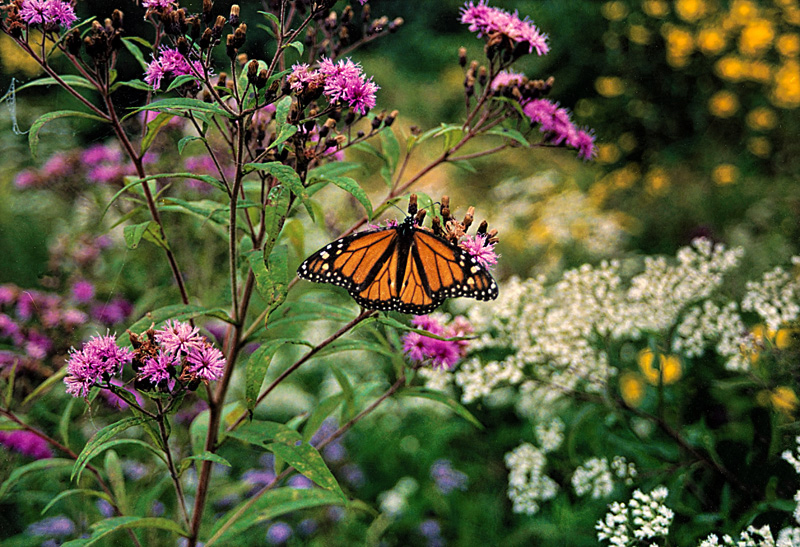
The problem confronting the monarch butterfly is clear, the destruction of habitat in the eastern U.S., particularly the corn belt. This irresistible insect depends on one plant species for its larval phase to survive, and that is milkweed. It's the only food source the caterpillar can eat. Without milkweed there will be no monarchs, and it just might happen unless something changes in a hurry.
According to experts at the Monarch Joint Venture, a consortium of 26 groups committed to saving the butterfly, the midwestern United States, cradle of most monarch butterflies in the northern hemisphere, has lost 60% of its milkweed in the last decade. This loss is responsible for most of the population collapse of the monarch butterfly throughout the hemisphere. A lethal combination of factors has led to this dilemma.
Without a doubt the single biggest factor has been the development of corn and soybeans genetically engineered to be resistant to the herbicide glyphosate, or Roundup, in the late 90s. At about the same time the Energy Independence and Security Act, from Washington, mandated a massive increase in ethanol production as part of our nation's push toward energy self-sufficiency. So planting corn suddenly was not only profitable, it was patriotic!
In response, and in short order, there was massive conversion of former grasslands, rangelands, and conservation reserves to corn fields, of the GMO variety. And further, million of acres of "edges," along roadsides and agricultural fields, once left to native plants, were also plowed and planted with corn. And then the coup de grace-this Indiana sized patchwork of former butterfly heaven, about 24 million acres of it, was saturated with Roundup. A true monoculture resulted. Gone were native plants, including milkweed, and the butterflies and other pollinators that depend on them. Only the crops survived!
While solutions to controversial issues such as herbicides, GMOs, and ethanol mandates are debated in Congress, the experts say there is no time to waste. A grass roots effort is being initiated by government and private groups to save the monarch. Americans are being called upon to plant milkweed and restore native plants in their backyards. The only solution to this crisis will be the largest habitat restoration effort in history. We cannot wait for government to act. For information on how you can help go to monarchwatch.com or monarchjointventure.com.
This picture was taken 25 years ago, in the days of Kodacolor negative film, and shows its age to the scanner. Nevertheless it tells a powerful story. It was taken at a roadside intersection near my home. Sadly this photo probably could not be taken today. Huge swaths of pollinator habitat are now being removed each year by the mowing and spraying of roadsides, which is expensive and accomplishes little. By halting this single practice we could restore millions of acres of native plants to the environment and help fuel the return of pollinators, including our favorite insect.